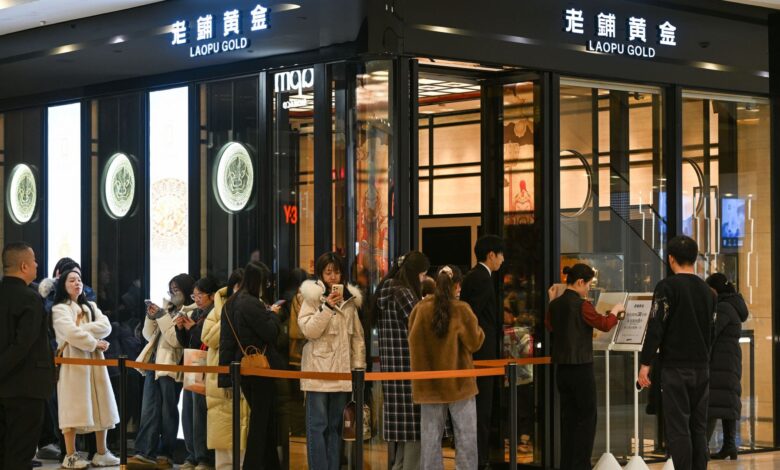Chinese consumer companies signal spending is picking up again

Consumer spending in China is showing signs of improvement, according to the latest earnings reports from Chinese companies. While it may not have fully returned to pre-pandemic levels, there are positive trends indicating a healthier consumer market.
E-commerce giants Alibaba and JD.com have reported faster year-on-year revenue growth in the last quarter of 2024 compared to the previous year. This suggests a gradual recovery in consumer spending, although it has not yet reached its peak. Charlie Chen, managing director of China Renaissance Securities, believes that for consumer spending to fully recover, Chinese companies need to see double-digit revenue growth and an improvement in consumer confidence. The recent real estate slump has impacted consumers’ sense of affluence, which is also a factor in the recovery process.
Chinese policymakers have made boosting consumption a priority this year, expanding trade-in subsidy programs to include smartphones and signaling a shift in real estate policy to stabilize the market. These efforts aim to stimulate consumer spending and drive economic growth.
Some companies have found success in niche markets where Chinese consumers are actively spending. Laopu Gold, a Beijing-based jewelry company, reported a significant increase in net profit in 2024, driven by a surge in demand for gold jewelry with Chinese designs. Toy company Pop Mart also experienced substantial growth in revenue in mainland China, reflecting the changing consumer preferences and market trends.
Niu Technologies reported a surge in e-scooter sales in China, attributing the growth to a focus on premium models and store expansion. This success contrasts with a slowdown in economic growth in 2023, which impacted sales for the company.
Retail sales in China have shown modest improvement, with a 4% year-over-year increase in January and February. This growth is a positive sign for the consumer market, although it still lags behind pre-pandemic levels. Government policies are expected to support more consumer discretionary spending, as recovery potential is higher in these sectors compared to daily necessities.
Intense competition remains a challenge in the Chinese consumer market, with electric car companies slashing prices and retailers struggling to compete with online discounts. Companies like Miniso reported revenue growth in mainland China, driven by online sales, while major beverage chains experienced lower same-store sales in the latter part of 2024.
Overall, the consumer market in China is showing signs of recovery, with companies adapting to changing consumer behavior and market dynamics. Government support and strategic initiatives from businesses will be crucial in driving sustained growth in the coming months. In the fourth quarter of 2024, there was a noticeable decline in average monthly sales per Chagee milk tea store in China. According to CNBC calculations based on figures disclosed in a prospectus for a U.S. IPO, there was a significant 20.6% decrease in sales compared to the previous year. This drop comes after a period of modest growth in the prior quarter. On the other hand, overseas sales saw a substantial 29.2% increase year on year in the fourth quarter.
Mixue, a popular Chinese bubble tea chain, reported a decrease in average sales per store to 1.08 million yuan in the first three months of 2024, down from 1.13 million yuan in the same period the previous year. This downward trend in sales is concerning for the company and may indicate a shift in consumer preferences or economic factors affecting purchasing behavior.
Even Luckin, a rising Chinese coffee chain, experienced a 3.4% decline in same-store sales for self-operated stores in the fourth quarter compared to the year-ago period. Similarly, Starbucks, a well-established global coffee chain, saw a 6% decrease in comparable store sales during the same timeframe. These declines in sales for both Luckin and Starbucks suggest a challenging market environment or changing consumer habits impacting the coffee industry in China.
It is clear from these latest figures that the Chinese beverage market is experiencing some turbulence, with established and emerging brands alike facing challenges in maintaining sales growth. As the industry continues to evolve, companies will need to adapt their strategies to meet changing consumer demands and stay competitive in the market.
Overall, the data presented in the fourth quarter of 2024 highlights the importance of monitoring sales trends and making strategic adjustments to navigate the dynamic landscape of the Chinese beverage industry. By staying informed and agile, companies can position themselves for success in an increasingly competitive market.





